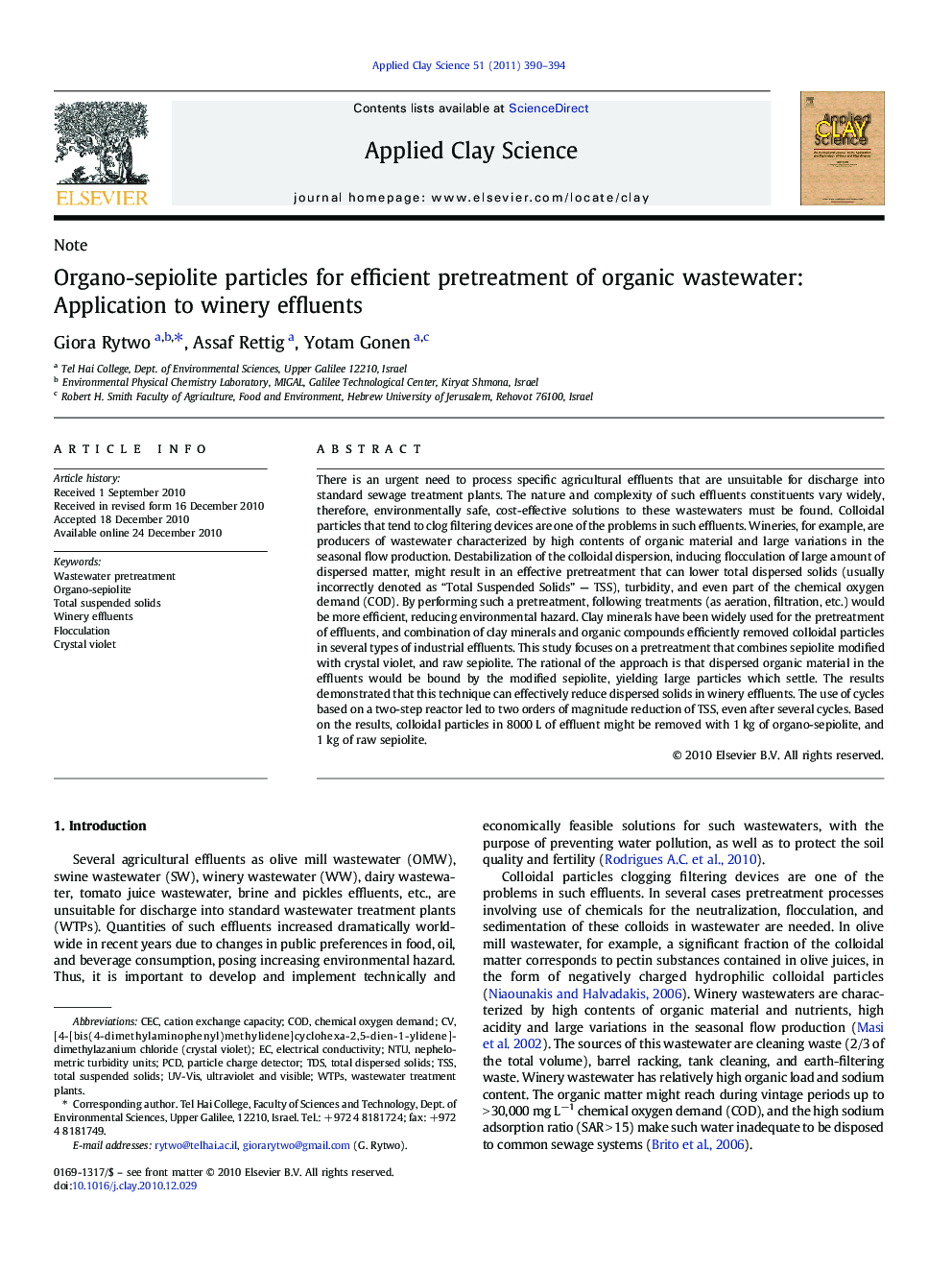| کد مقاله | کد نشریه | سال انتشار | مقاله انگلیسی | نسخه تمام متن |
|---|---|---|---|---|
| 10676965 | 1011864 | 2011 | 5 صفحه PDF | دانلود رایگان |
عنوان انگلیسی مقاله ISI
Organo-sepiolite particles for efficient pretreatment of organic wastewater: Application to winery effluents
دانلود مقاله + سفارش ترجمه
دانلود مقاله ISI انگلیسی
رایگان برای ایرانیان
کلمات کلیدی
موضوعات مرتبط
مهندسی و علوم پایه
علوم زمین و سیارات
ژئوشیمی و پترولوژی
پیش نمایش صفحه اول مقاله

چکیده انگلیسی
There is an urgent need to process specific agricultural effluents that are unsuitable for discharge into standard sewage treatment plants. The nature and complexity of such effluents constituents vary widely, therefore, environmentally safe, cost-effective solutions to these wastewaters must be found. Colloidal particles that tend to clog filtering devices are one of the problems in such effluents. Wineries, for example, are producers of wastewater characterized by high contents of organic material and large variations in the seasonal flow production. Destabilization of the colloidal dispersion, inducing flocculation of large amount of dispersed matter, might result in an effective pretreatment that can lower total dispersed solids (usually incorrectly denoted as “Total Suspended Solids” - TSS), turbidity, and even part of the chemical oxygen demand (COD). By performing such a pretreatment, following treatments (as aeration, filtration, etc.) would be more efficient, reducing environmental hazard. Clay minerals have been widely used for the pretreatment of effluents, and combination of clay minerals and organic compounds efficiently removed colloidal particles in several types of industrial effluents. This study focuses on a pretreatment that combines sepiolite modified with crystal violet, and raw sepiolite. The rational of the approach is that dispersed organic material in the effluents would be bound by the modified sepiolite, yielding large particles which settle. The results demonstrated that this technique can effectively reduce dispersed solids in winery effluents. The use of cycles based on a two-step reactor led to two orders of magnitude reduction of TSS, even after several cycles. Based on the results, colloidal particles in 8000Â L of effluent might be removed with 1Â kg of organo-sepiolite, and 1Â kg of raw sepiolite.
ناشر
Database: Elsevier - ScienceDirect (ساینس دایرکت)
Journal: Applied Clay Science - Volume 51, Issue 3, February 2011, Pages 390-394
Journal: Applied Clay Science - Volume 51, Issue 3, February 2011, Pages 390-394
نویسندگان
Giora Rytwo, Assaf Rettig, Yotam Gonen,